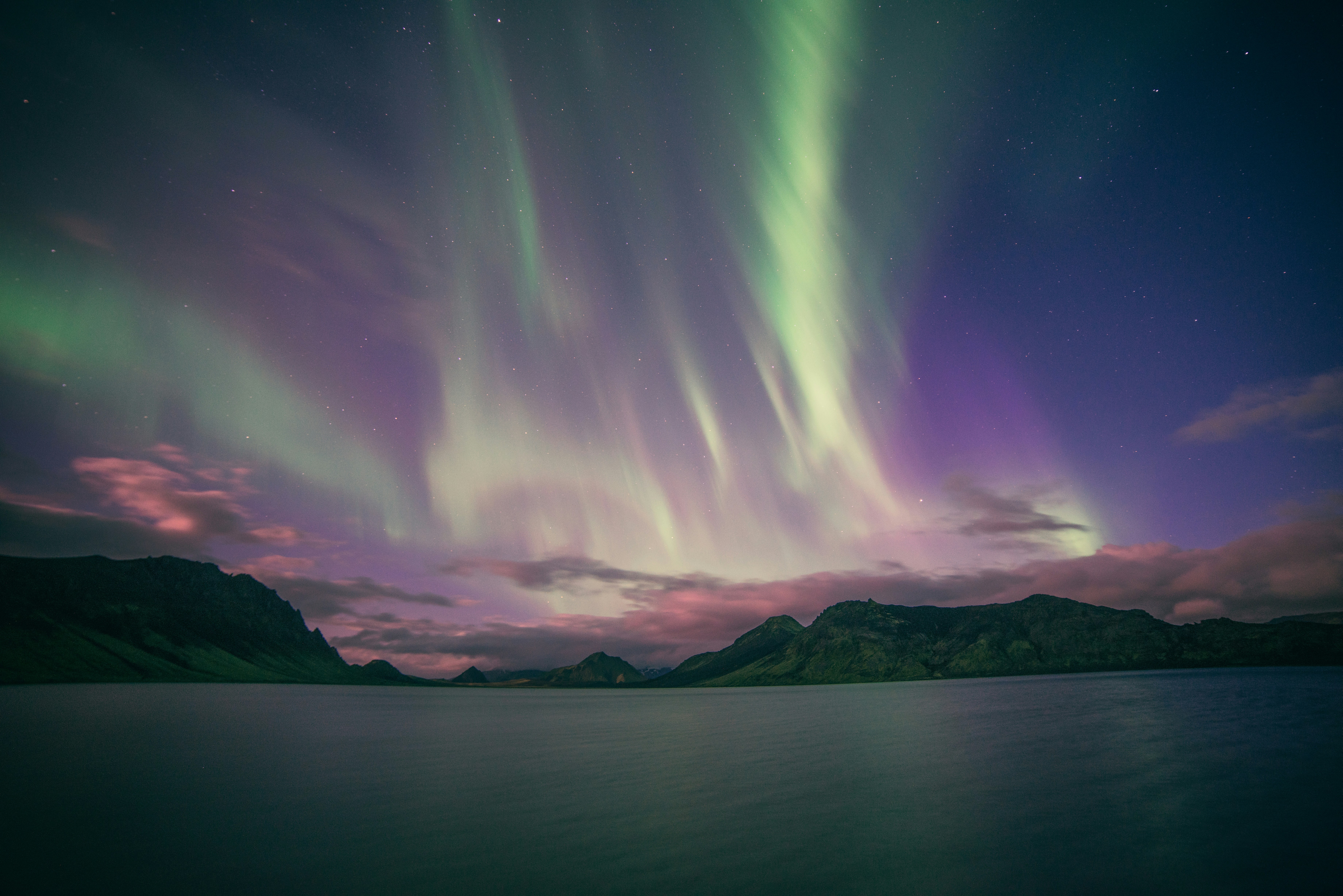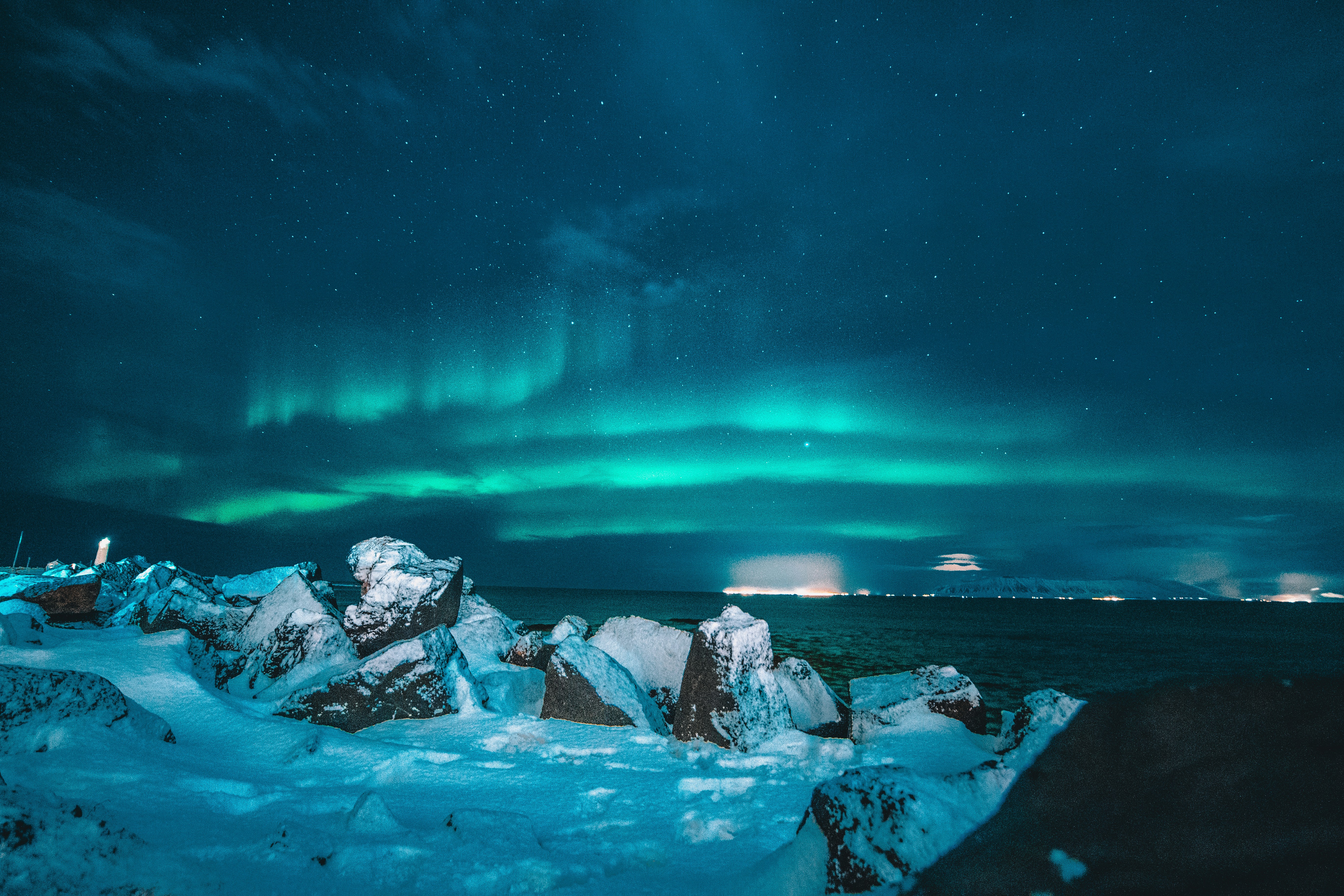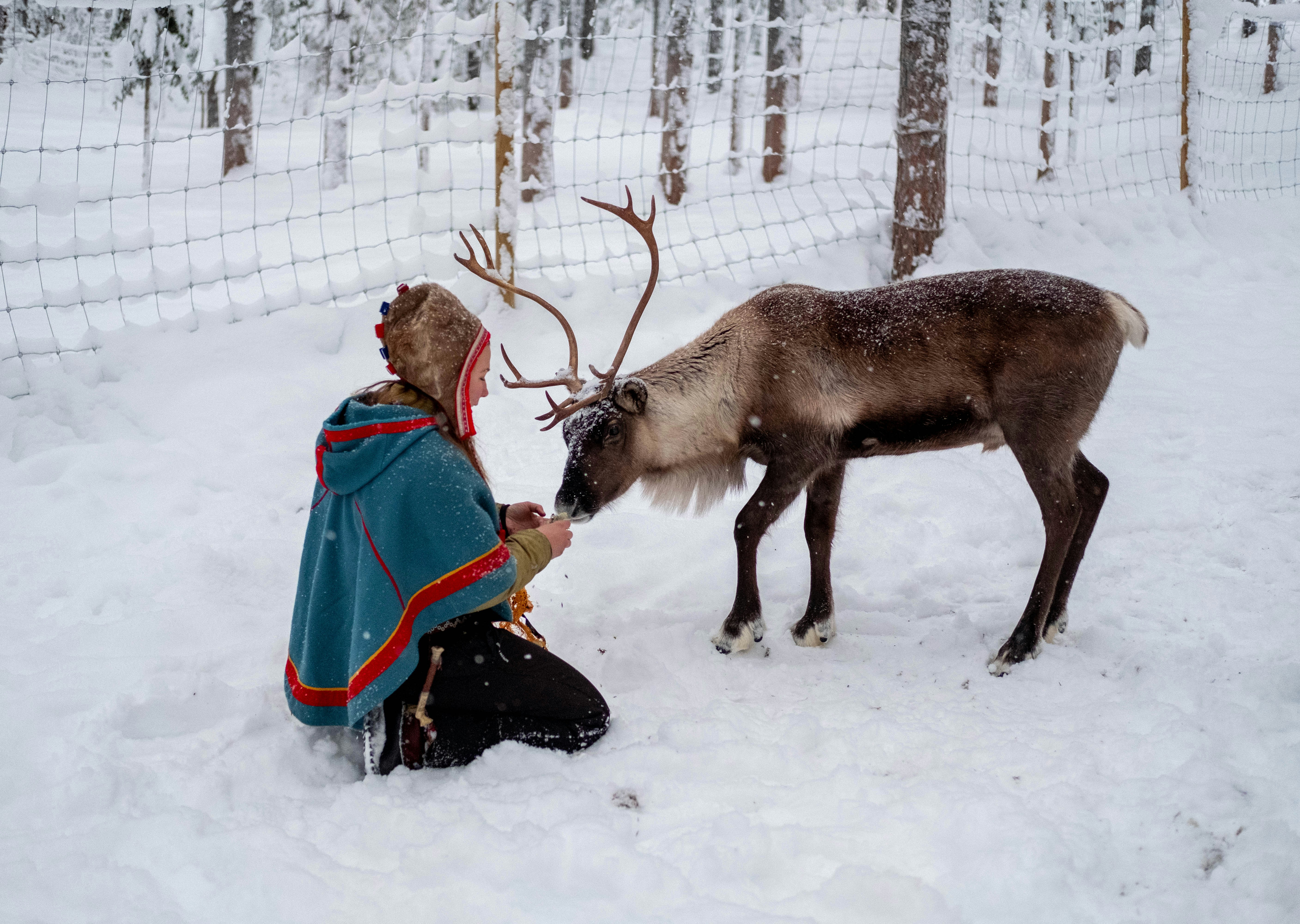What Causes the Northern Lights: Science Behind the Aurora Phenomenon
Discover the fascinating science behind what causes the northern lights. Learn about solar particles, magnetic fields, and atmospheric interactions creating the aurora borealis.
What Causes the Northern Lights: Science Behind the Aurora Phenomenon
The northern lights, or aurora borealis, represent one of nature's most spectacular displays, painting the Arctic sky with curtains of green, red, and purple light. Understanding what causes the northern lights reveals a fascinating interplay between our sun, Earth's magnetic field, and the upper atmosphere—a cosmic dance that has captivated humans for millennia.
The Solar Connection
Solar Wind and Charged Particles
The story of the northern lights begins 93 million miles away on the surface of our sun. The sun continuously emits a stream of charged particles—primarily electrons and protons—known as the solar wind. This constant flow of particles travels through space at speeds of 400-800 kilometers per second, carrying with it pieces of the sun's magnetic field.
Key Solar Factors:
- Solar Wind Speed: Faster particles create more intense auroras
- Particle Density: Higher concentrations increase aurora visibility
- Magnetic Field Orientation: Direction affects Earth interaction
- Solar Activity Cycles: 11-year cycles influence aurora frequency
Solar Storms and Coronal Mass Ejections
When the sun experiences increased activity—such as solar flares or coronal mass ejections (CMEs)—it releases massive bursts of charged particles and magnetic fields into space. These solar storms can dramatically enhance aurora activity when they reach Earth.
Types of Solar Activity:
- Solar Flares: Sudden bursts of electromagnetic energy
- Coronal Mass Ejections: Massive plasma clouds ejected from the sun
- Solar Wind Variations: Changes in speed and particle density
- Magnetic Reconnection: Solar magnetic field line interactions
Earth's Magnetic Shield
The Magnetosphere
Earth's magnetic field creates a protective bubble around our planet called the magnetosphere. This invisible shield deflects most solar wind particles, but it also creates the conditions necessary for aurora formation.
Magnetosphere Structure:
- Bow Shock: Where solar wind first encounters Earth's magnetic field
- Magnetopause: Boundary between solar wind and magnetosphere
- Magnetic Field Lines: Pathways guiding charged particles
- Polar Cusps: Regions where particles can penetrate more easily
Magnetic Field Line Interaction
When solar wind particles encounter Earth's magnetosphere, they interact with magnetic field lines that converge at the polar regions. This interaction channels particles toward the Arctic and Antarctic, concentrating aurora activity in oval-shaped regions around the magnetic poles.
The Aurora Oval:
- Geographic Location: Centered on magnetic poles, not geographic poles
- Size Variations: Expands during high solar activity
- Lyngen Peninsula Position: Positioned perfectly within the typical aurora oval
- Seasonal Changes: Oval position shifts with solar activity
Atmospheric Chemistry and Aurora Colors
Altitude and Gas Composition
The spectacular colors of the northern lights result from charged particles colliding with different gases at various altitudes in Earth's atmosphere. Each gas produces characteristic colors when energized by these collisions.
Color Production by Altitude:
- Green (100-300 km): Oxygen atoms producing the most common aurora color
- Red (300+ km): Oxygen at higher altitudes creating rare red auroras
- Blue/Purple (80-100 km): Nitrogen molecules at lower altitudes
- Pink: Combination of red oxygen and blue nitrogen emissions
The Physics of Aurora Colors
Oxygen Emissions:
- 557.7 nanometers: The familiar green aurora color
- 630.0 nanometers: Red aurora, visible during intense activity
- Excitation Process: Solar particles transferring energy to oxygen atoms
- Emission Timing: Delayed light emission creating the glow effect
Nitrogen Contributions:
- Blue Light: High-energy collisions with nitrogen molecules
- Purple Hues: Lower-energy nitrogen interactions
- Pink Auroras: Mixture of red oxygen and blue nitrogen
- Rare Colors: Uncommon combinations during intense activity
The Complete Aurora Formation Process
Step-by-Step Aurora Creation
- Solar Particle Emission: Sun releases charged particles into space
- Interplanetary Travel: Particles journey to Earth (1-3 days typically)
- Magnetosphere Interaction: Earth's magnetic field channels particles
- Atmospheric Entry: Particles follow magnetic field lines to polar regions
- Gas Collisions: Charged particles collide with atmospheric gases
- Energy Transfer: Particles transfer energy to oxygen and nitrogen atoms
- Light Emission: Energized atoms release photons, creating aurora colors
- Visible Display: Coordinated emissions create the aurora curtains we see
Factors Affecting Aurora Intensity
Solar Activity Level:
- KP Index: Measures geomagnetic activity (0-9 scale)
- Solar Cycle Phase: 11-year solar maximum/minimum cycles
- Coronal Hole Streams: High-speed solar wind streams
- Interplanetary Magnetic Field: Orientation affects Earth interaction
Atmospheric Conditions:
- Seasonal Variations: Equinox periods often show increased activity
- Local Weather: Clear skies essential for visual observation
- Moon Phase: Bright moon can wash out faint auroras
- Light Pollution: Urban lights reduce aurora visibility
Aurora Morphology and Movement
Aurora Shapes and Structures
The northern lights appear in various forms, each reflecting different conditions in the magnetosphere and solar wind:
Common Aurora Forms:
- Arcs: Gentle curved bands across the sky
- Rays: Vertical columns of light reaching toward zenith
- Curtains: Flowing, sheet-like displays
- Coronas: Radial patterns appearing directly overhead
- Pulsating Aurora: Rhythmic brightening and dimming
Aurora Movement and Dynamics
Real-Time Changes:
- Flickering: Rapid variations in brightness and color
- Flowing Motion: Apparent movement along magnetic field lines
- Breakup Events: Sudden dramatic increases in activity and movement
- Substorms: Explosive brightening lasting 30-60 minutes
Predicting Aurora Activity
Scientific Forecasting
Modern aurora prediction combines satellite observations, solar monitoring, and atmospheric modeling to forecast northern lights activity:
Monitoring Systems:
- Solar Observatories: Continuous sun monitoring for flare activity
- Satellite Networks: Real-time solar wind measurements
- Ground Magnetometers: Earth's magnetic field variation detection
- Computer Models: Mathematical predictions of particle interactions
Forecast Accuracy:
- 27-Day Forecasts: Based on solar rotation patterns
- 3-Day Predictions: Solar wind travel time from sun to Earth
- Real-Time Monitoring: Current geomagnetic conditions
- Local Adjustments: Regional weather and viewing condition factors
Citizen Science and Aurora Reporting
Community Involvement:
- Aurora Photography: Social media documentation helps track activity
- Observation Reports: Ground-truth data for forecast verification
- Mobile Apps: Real-time aurora alert systems
- Scientific Contribution: Amateur observations support research
Aurora Research and Discovery
Historical Understanding
Scientific Milestones:
- 1619: Galileo coins the term "aurora borealis"
- 1896: Kristian Birkeland proposes particle theory
- 1958: First satellite observations of aurora
- Modern Era: Comprehensive understanding through space-age technology
Current Research Areas
Active Studies:
- Magnetosphere Dynamics: Understanding solar wind interactions
- Climate Connections: Aurora relationships with atmospheric systems
- Space Weather: Predicting impacts on technology and communications
- Atmospheric Chemistry: Detailed study of emission processes
Why Lyngen Peninsula is Perfect for Aurora Science
Optimal Viewing Conditions
Geographic Advantages:
- Magnetic Latitude: Positioned directly in the auroral oval
- Minimal Light Pollution: Dark skies perfect for observation
- Weather Patterns: Relatively clear Arctic conditions
- Accessibility: Easy access to prime viewing locations
Research Opportunities:
- Ground-Based Studies: Ideal location for aurora monitoring stations
- Photography Documentation: Clear atmospheric conditions for imaging
- Educational Programs: Perfect setting for aurora science education
- International Collaboration: Access point for global aurora research
Experiencing Aurora Science in Lyngen
Educational Aurora Tours
Scientific Tourism:
- Expert Guides: Tours led by aurora researchers and scientists
- Real-Time Monitoring: Use of professional aurora prediction tools
- Photography Instruction: Scientific documentation techniques
- Educational Components: Understanding the science while experiencing the beauty
Learning Opportunities:
- Aurora Workshops: Hands-on learning about aurora science
- Citizen Science: Participate in aurora research projects
- Photography Science: Technical aspects of aurora imaging
- Forecasting Training: Learn to predict aurora activity
The northern lights represent a perfect example of how cosmic forces create earthly beauty. Understanding what causes the northern lights enhances the wonder of witnessing this natural phenomenon, connecting observers to the vast electromagnetic relationships that govern our solar system. From Lyngen Peninsula's prime viewing location, visitors can experience both the scientific marvel and aesthetic beauty of one of nature's most spectacular displays.
Discover the fascinating science behind the northern lights during your stay at Lyngen Seaside, where clear Arctic skies and expert guidance create the perfect setting for understanding and experiencing the aurora borealis phenomenon.


